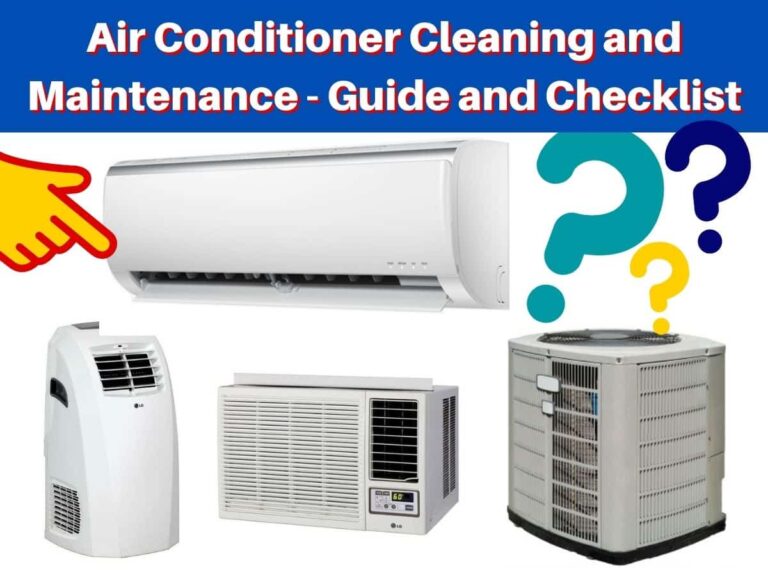An air conditioner’s filters, fins and coils require regular and proper maintenance for the system to work effectively and efficiently during its years of service. If you neglect the necessary maintenance or cleaning, your air conditioning performance will have a steady decline while energy usage steadily increases.
If you care to maintain and clean your air conditioner (AC), you’ll both save money on energy, and you’ll also extend your air conditioner’s lifespan, saving money on costly early replacement. Don’t forget that An AC needs regular and proper cleaning and maintenance to make sure it’s operating at the highest efficiency. The best time to use these tips is just before each cooling season begins.
If you want to maintain and clean your air conditioner (AC), you’ll both save money on energy, and also, your air conditioner’s lifespan will extend you’ll save money on an early replacement. Remember that an AC require regular and proper cleaning and maintenance to function at the highest efficiency. Before each cooling season begins, these tips are the most useful.
Some of the steps that are easy and simple and you do not require a service technician to do them. Knowing and applying these simple technical informations will save you both time and money in the long run.
Air Conditioner Maintenance
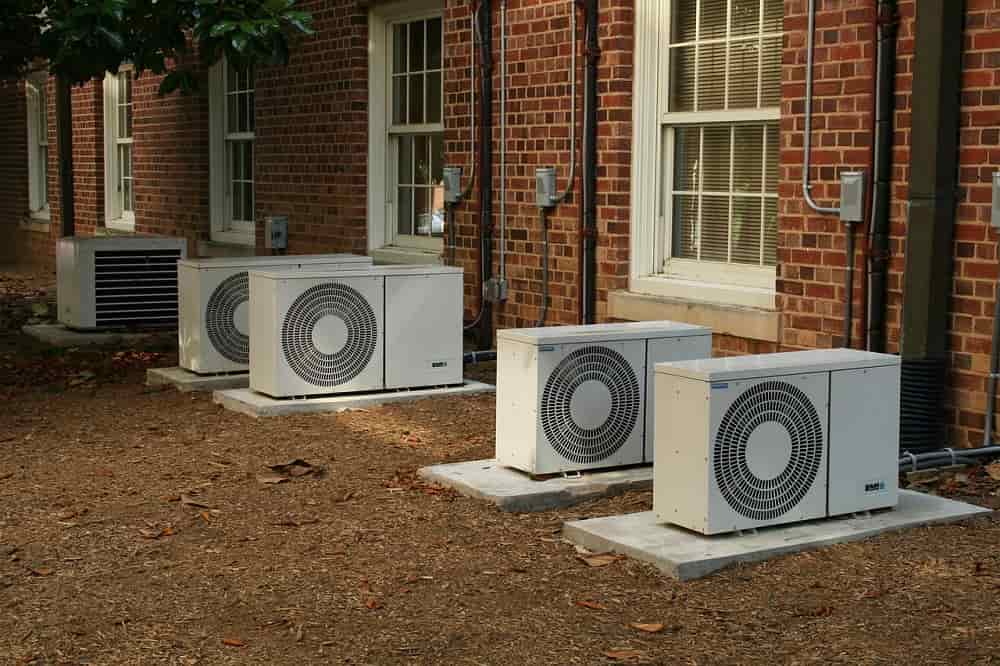
- Air Conditioner Filters
To ensure the efficiency of your air conditioner, cleaning or replacing its filters regularly is the most important and effective maintenance. Dirty and clogged filters will block the regular airflow reduce the system’s efficiency of air conditioner insignificantly. When the normal airflow is obstructed, air that bypasses the filter can carry the dirt and dust straight into the evaporater coil and weaken the coil’s heat absorbing capacity. Replacing your dirty and clogged AC filter with a clean one will lower your air conditioner’s energy consumption by 5% to 15%.
In the central air conditioners, filters are generally located along the return duct’s lenght. Among the common filter locations, there are walls, ceilings, furnaces or the air conditioner itself. Room air conditioners’ filters are mounted in the grill that faces into the room.
Some types of air conditioners can be reusable while others must be replaced. You can find a variety of air conditioner filter types and efficiencies. You should clean, or if needed replace your air conditioning system’s filter or filters every mont hor two times during the summer seasons. Some units also come with electrostatic filters that act as a secondary filter system for the evaporator. Change them if they are dirty. If you frequently use your air conditioner and if it is subjected to more dusty situations or you have pets in your house, the filters of it may need more attention and maintenance.
- Air Conditioner Evaporator

If the coils of the indoor evaporator of the air conditioner are dirty, you can use a vacuum cleaner or a wet cloth to clean it. You can do it at least once a mont hor every two weeks depending on the using frequency.
Keeping the evaporator of the air conditioner clean ensure that the cooling capacity of the air conditioner is in a good condition and dirt don’t obstruct the flow of air to the room.
- Air Conditioner Coils
An air conditioner’s evaporator coil and condenser coils gather dirt and dust over time. A clean filter prevents the evaporator coil from soiling fastly. The dirt and dust reduces the airflow and insulates the coil and this will reduce the ability of the coil to absorb the heat. To avoid this, check your evaporator coil regularly and clean it when it is necessary.
- Coil Fins
The aluminum fins on evaporator and condenser coils are easily bent and can block airflow through the coil. There is a tool called a “fin comb” that will comb these fins back into nearly original condition.

- Condensate Drains
Clogged or blocked drain channels prevent A/C unit from reducing humidity, and the resulting excess moisture may discolor walls or carpet.
How to Maintain a Split Air Conditioner?
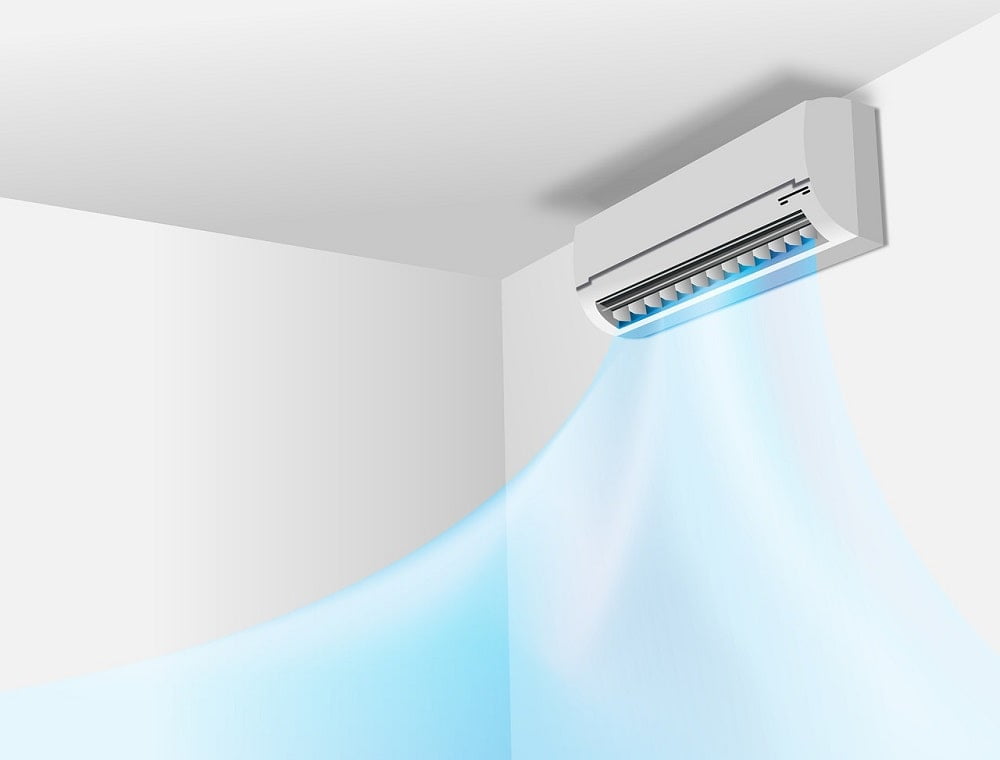
- Keeping the Outside Clean
Accumulated debris and dust may cause big problems for your split air conditioner. Have a weekly dusting routine for your air conditioner. You can simply wipe it down with a damp cloth. Also, make sure that outdoor vents are free from any blockage.
- Filter Cleaning
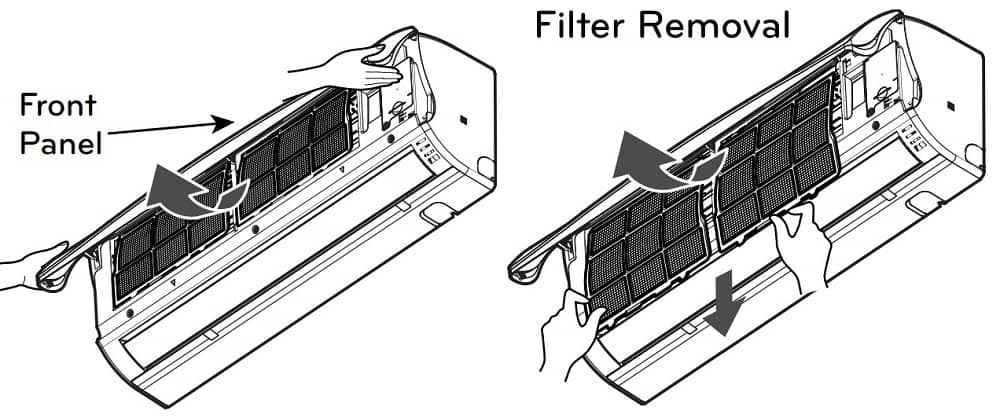
If the filter inside the air conditioner is blocked, intake air amount decreases and the amount of electricity necessary to cool the room increases.
It is recommended to clean the filter once every two week. You can clean filter of dust by washing with water or using a vacuum cleaner. When extremely soiled, you can wash in lukewarm water using detergent and dry in a cloudy place away from the direct sunlight. For models who has an automatic cleaning function, you can use this function to clan the filter.
- Cleaning the Heat Exchanger (Cooling Fan)
Cleaning both filters and the heat echanger (cooling fan) in the back is important and effective for keeping the electiricity consumption low. Before cleaning season begins, make sure that cooling fan is clean. If the dirt of the fan is apparent, it is best for you to contact your local distributor.
- Cleaning the Coil and Condenser
Keep your air conditioner’s coils and conders free of dirt and dust. Make sure all components are powered off before you start to clean anything. You can use a simple hose to spray the unit and dust off the rest of the debris by hand.
- Monitoring the Pipes
The pipes which allow cold or warm air into your room may accumulate the dirt and dust too. Pipes can also have leaks. Check your pipes regularly when you clean your filters.
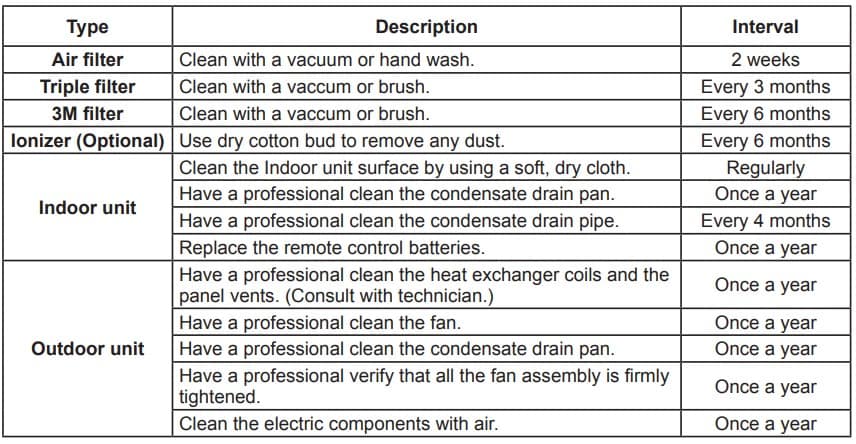
How to Clean a Split Air Conditioner?
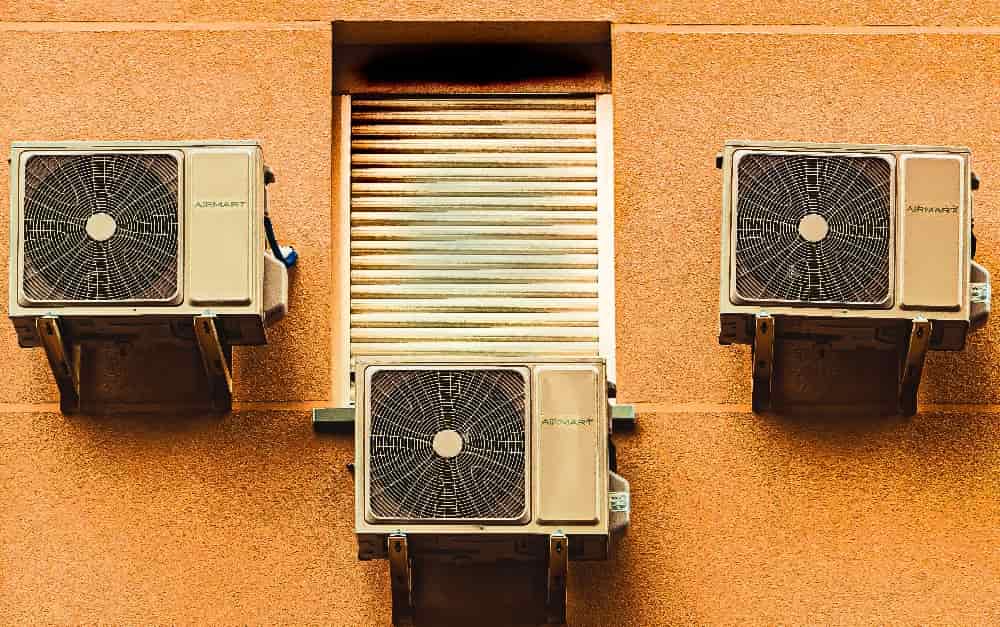
Some things you can do to clean your air conditioner include:
| 1 | Turn off the power Before you start cleaning anything, make sure you turn off the power. Turn off the compressor too. |
| 2 | Remove the casing To clean things more properly, you can take the front casing of the air conditioning unit. But if you do not know what you are doing, it is good to skip this step and call a technician to help. |
| 3 | Take out the plug fort he drip tray This step will allow all of the dirty water flow into the wash bag instead of the drain pipe. |
| 4 | Clean the Filters This is an important but easy step. Take the filters of the air conditioner unit outside carefully and be sure you don’t spill any dust or dirt. And lean them against a solid object or wall and put them back in when you are done. |
| 5 | Get the wash bag ready When you are using a wash back, make sure you put it around the unit as per its instructions to be sure it is installed properly. Once you are done, take the bag off carefully and remove the waste. Also, be careful when you are removing this waste because it can contain harmful chemicals potentially. |
| 6 | Spray your cleaning solution on the coils Be sure that you get in there as deeply as possible. If the dirt is stubborn, you can take time to scrub them softly with a toothebrush. Make sure that you are gentle when brushing down the air conditioner unit. After leaving the solution on your system for the recommended time, then you can clean them off by spraying water. Make sure you let your air conditioner dry before turning it back on. |
How to Maintain a Window Air Conditioner?
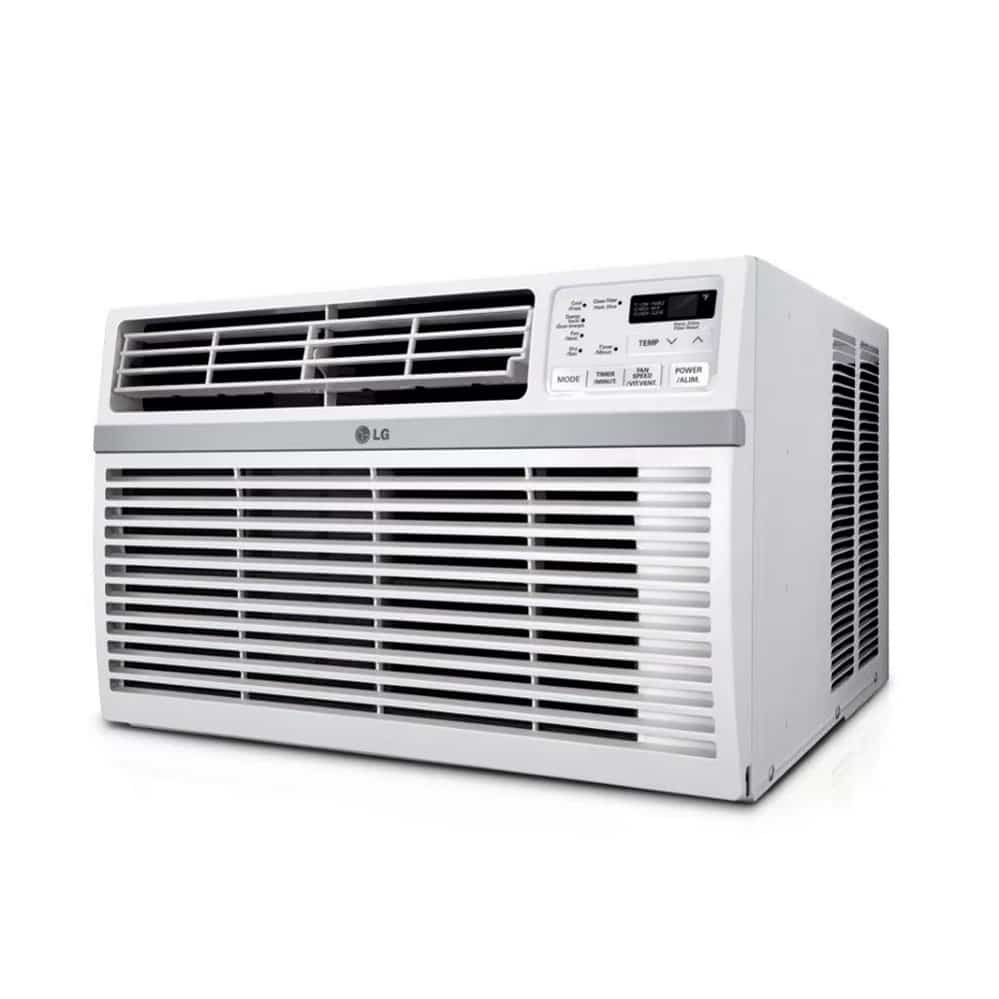
Window air conditioners which is also called room air conditioners work similarly to the central air conditioners. Window air conditioners are smaller than central systems and they are usually more expensive to operate.
Between the coils and the compressor, there are two fans, a motor and thermostat controls. Regular and proper maintenance of your window air conditioner should be performed, especially at the beginning and the conclusion of the season in which it is used. Dirt is the most dangerous enemy of the window air conditioners. Dirt will lower the efficiency of the evaporater coil, stop the function of the fan which blows out the cool air, clog the filters and block the drain ports. Keeping up with maintenance of your air conditioner unit can prolong the life of your unit as well as maintain its performance and efficiency.
Note: Don’t forget the unplug your air conditioner unit before any cleaning and maintenance to avoid any kind of injury or accident.
- Filters
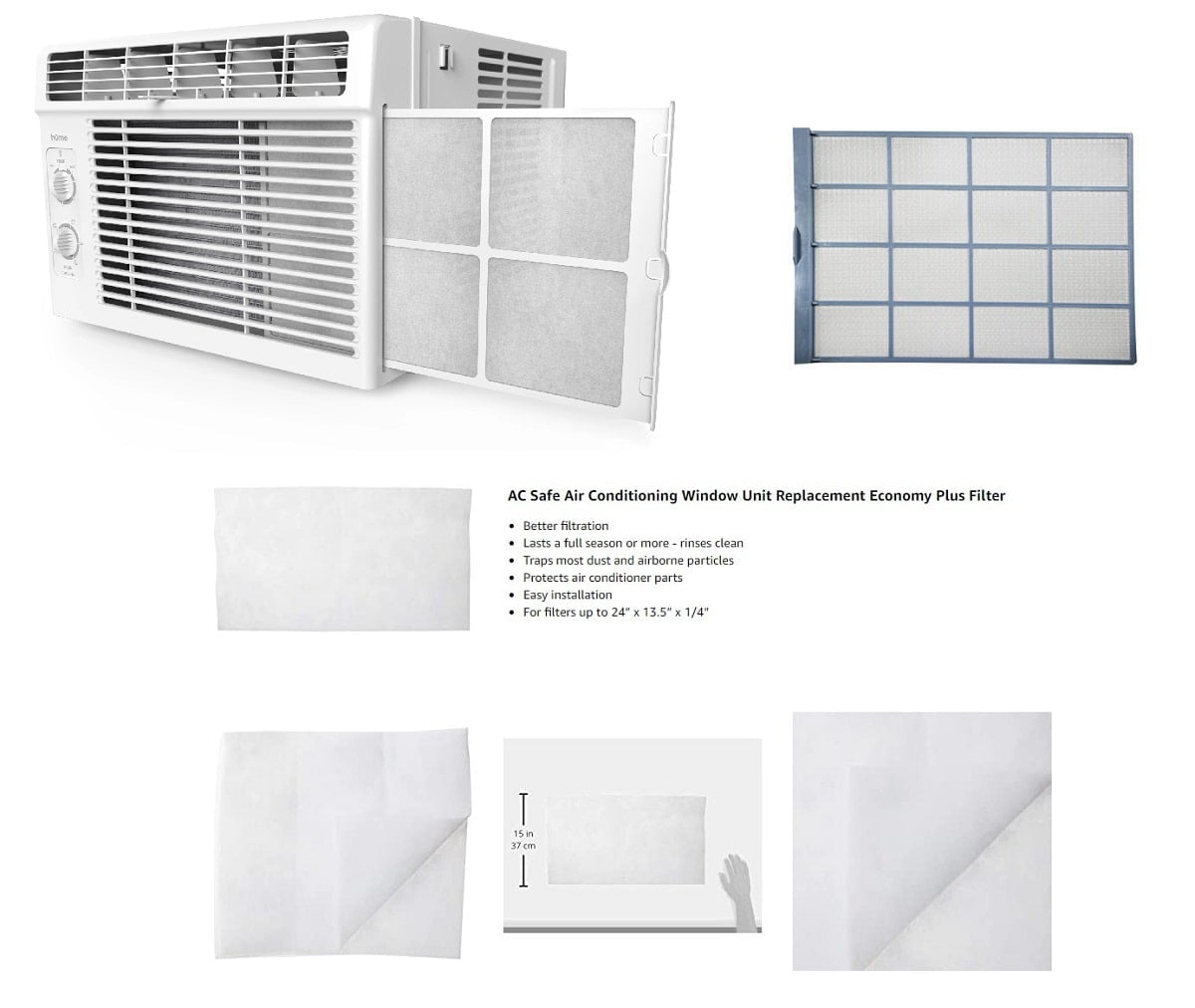
At the beginning of every cooling season and once a month during the season, you should remove the front grille and clean or replace the filter if needed. If your house is a dusty area, you should clean or replace the filters more oftenly.
Cleaning regularly and replacement of the air filter of your unit is necessary and important. If an air system of an air conditioner unit is clogged or blocked, it has to work harder to produce necessary airflow and, in turn, use more energy. Some brands have reusable filters while other brands must be replaced. You can consult your product owner’s manual for the filter specifications and guideline of usage. You should check the resuable filters which can be cleaned regulary and clean them with warm water and a soft, unscented detergent if needed. For filters that must be replaced, it is usually recommended that the filter be replaced about once every two months. But this depends upon the air conditions both in and outside your home.
- Evaporator and the Condenser Coils
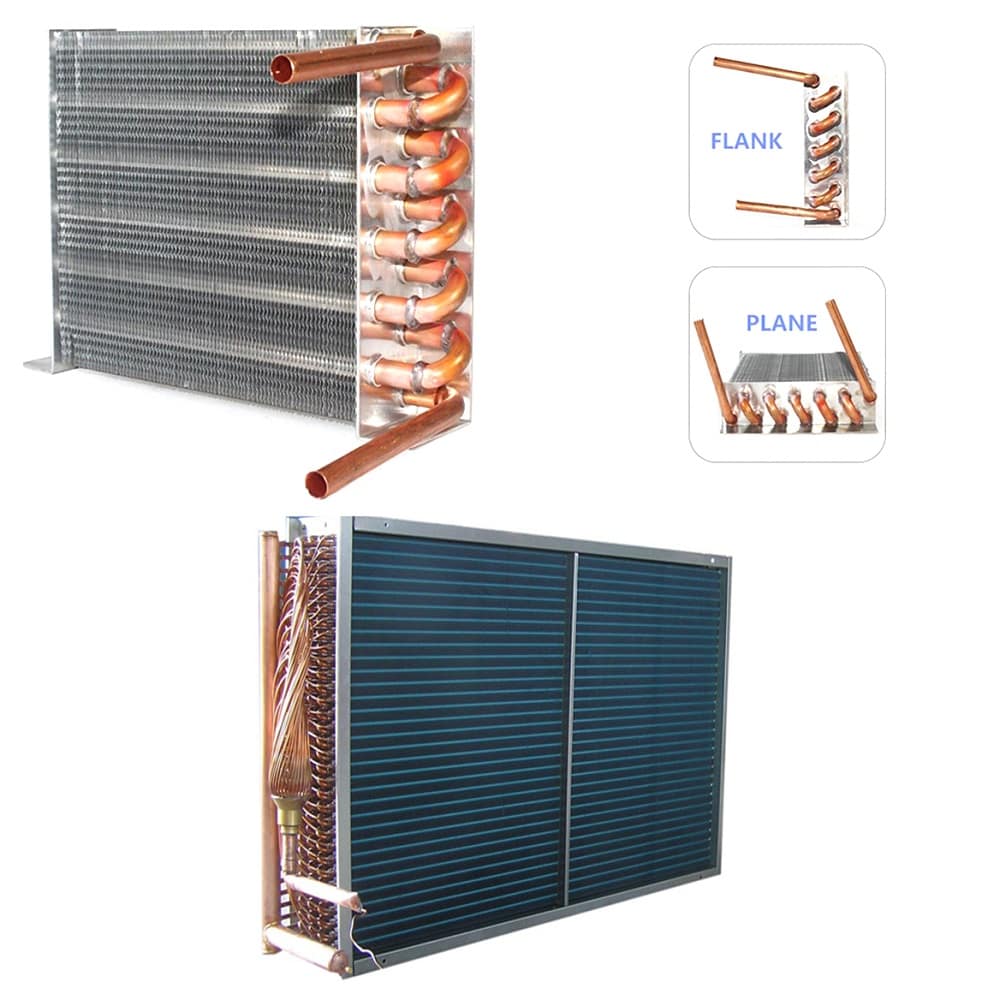
When the dirty filter is blocking the airflow, the ait that allows to pass through may bring in dirt and air contaminants. These degrade the in home air quality and impairs the evaporator coil’s capacity of heat absorbing by lowering the air conditioner’s performance capability. Regular filter mantenance helps mitigate the dirt and dust on the evaporator coils. But you should check the coils for apparent dust and dirt about once a year. The condenser coils on the back of the unit should also be checked and cleaned as they can collect dirt and debris as well.
- Coil Fins
The fins on the condenser coils and the evaporator may bend sometimescand compromise the air conditioner unit’s performance. You should regularly check the fins and maintain them with a comb to straighten them out. When using a fin comb, make sure that the comb’s teeth count matches the fins per inch specification of the coil.
- Drain Ports
While the air conditioner is working, condensed water vapor and moisture are funneled through drain ports, or an opening between the partition in the middle of the evaporator coil and the condenser coil.
Dirt can clog the drain ports. As a result, water leaks from the unit usually from the bottom of the grille. To avoid this clogging, you should clean the ports regularly. Check and clean the drain ports at the beginning of the every cooling season and every month.
You should also check the condenser side of the air conditioner. Some models have a drain port along the bottom edge of the cabinet frame. If your air conditioner has this drain port, clean it out while you clean the other ports.
The fan, motor, and compressor needs regular maintenance to keep your air-conditioning unit running at its most efficient.
- Fan
If a fan does not work properly, the problem can usually be the loose or dirty blades. If the fan do not operate or if it is noisy, cleaning and tightening will fix it.
How to Clean a Window Air Conditioner?
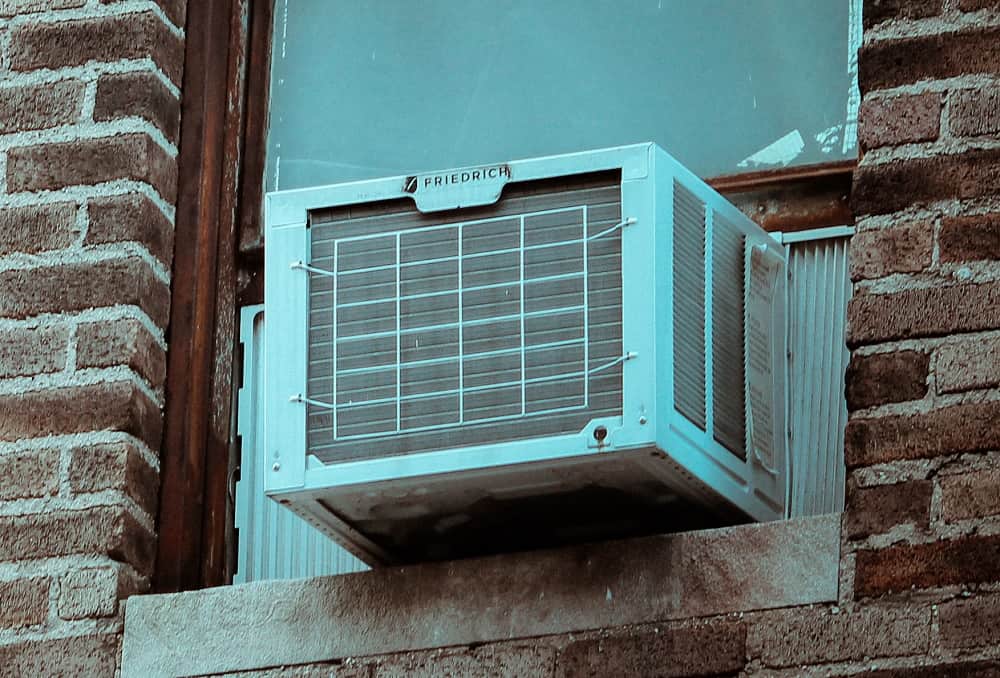
Window air conditioning units may not require a technician’s attention always, but that does not mean you don’t have to clean or maintain them regularly.
Cleaning the Filter
| 1 | To access the filter remove the front panel of the unit Turn off the unit and disconnect it from the power cord before you remove the fron panel. Window air conditioner’s front panel is secured with tabs and screws. After removing the panel, locate the filter and pull it out of its slot. |
| 2 | Wash filter with water You can rinse the filter under a running water. If there is dirt or dust on it, you can use a vacuum hose attachment. It is recommended to clean your filter at least once in a month. If you live in a more dusty enviroment, clean your filter more oftenly. Also, replace your filter at least every three months. |
| 3 | Dry your Filter and put it back Let the filter dry. Use a towel if there is excess water on it. When it is dry completely, put the filter back into its slot. Note: Do not run your window air conditioner with a wet filter or without a filter. |
| 4 | Replace your worn filters If your filter is worn or torn, replace it. |
How to Maintain a Central Air Conditioner?
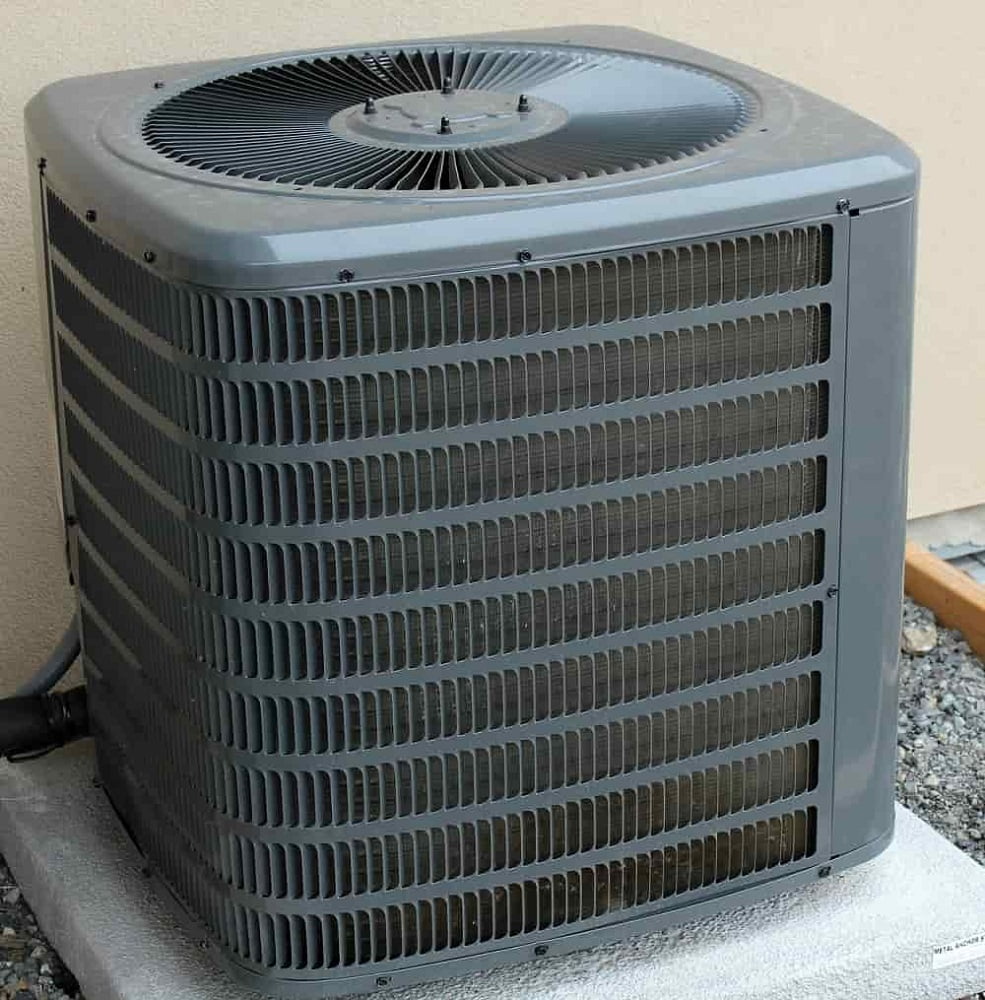
Central air conditioners have a closed loop system and the components which make up the central air conditioner include a condenser outside and an evaporator inside. The condenser has a compressor, coils and fins.
Clean the Debris on the Condenser Unit
Clean your condenser unit regularly. It is important to do that. Because the condenser unit pulls in air and usually pollens and other debris will cling to unit’s exterior. This will obstruct the airflow and cause an unwanted decrease in cooling efficiency of your unit. It even can cause the unit to overheat.
- Keep Away Your Plants from the A/C unit
Outdoor air conditioners need a certain amount of airflow around all sides to function properly and efficiently. So, it is recommended that object should be placed about three feet away from the air conditioner unit itself.
Clean up the debris such as leaves regularly. This will increase the air which your air conditioner needs. It’s also important to clean indoor grills and filters on a monthly and regular basis.
- Change the Filter Regularly
Maintaining a central air conditioner unit means maintaining airflow. That is why it is very important to change the filter regularly.
Generally, there is a recommended time for replacement of the air conditioner unit. But this depends on how much the unit is used and how dirty the air is.
During summer season, it may be more important to change the air filter more oftenly. You just need the remove the old filter and place the new filter in. That is all you have to do when replacing a filter.
- Keep the Sun Away from your A/C
You should block the sun during the hot days. You should close the blinds or drapes when the sun shines most brightly. In this way, your home’s interior temperature will not rise so much.
How to Clean a Central Air Conditioner?
Cleaning the condenser
| 1 | First, shut off power to the unit. Before you begin disassembling any part of the condenser, it’s importantl that you disable the power supply. |
| 2 | Clean the condenser fins Clean the fins by running the nozzle of a vacuum cleaner over them. This will remove the dust and dirt and allow the condenser to pull in air easily. |
| 3 | Straighten the condenser fins Sometimes fins on the condenser can become bent. You can use a knife to straighten the fins gently. |
| 4 | Clean the fan blades and the interior fins Rinse any kind of debris using a garden hose. Wipe off the fan blades with a clean cloth to be sure they are clean. 5.Reassemble the compressor unit Once you done, reassemble the everything back together. |
How to Maintain a Portable Air Conditioner?
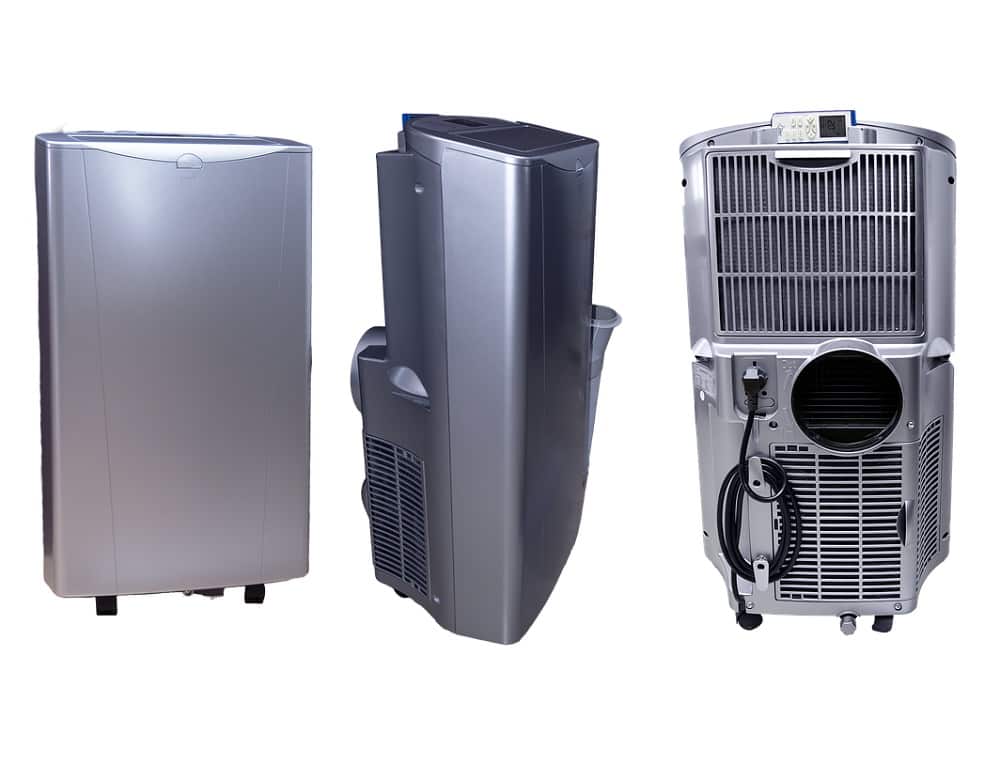
Unlike a fixed air conditioner, a portable air conditioner is a compact and small cooling tool. It is a mobile and can be moved to everywhere in your house, your office, your bedroom or child room depending on where you are spending time most. Its portable feature makes an easier use of it. A portable air conditioner does not require permanent installation, but it require a window for any exhaust. Most of the portable air conditioner also have a self- dehumidification feature as that cool.
To keep up your air conditioner in a good condition always, below there are some portable air conditioner maintenance tips which can help you ensure that it works properly and smoothly.
- Clean the Exterior Regularly
A portable air conditioner’s exterior needs to be cleaned routinely. A clean portable air conditioner will result in increased air volume, so you should clean the actual housing of the unit every few weeks. Wit a soft, damp cloth wife the surface of the unit when the air conditioner is turned off. Remember that do not use abrasive chemicals or detergents. Also, keep your portable air conditioner away from the direct sunlight because direct sunlight can change the colour of the unit’s surface.
- Maintain and Clean the Filters Regularly
To maintain a portable air conditioner, cleaning and the maintaning filters of it may be the most important tip. The filters of an air conditioner are like the lifeblood of it and it has large effects on your cooling experience. Regular cleaning of the unit’s filters of an air conditioner will ensure a long life of the appliance and they will work efficiently. It is recommended regular cleaning of the washable pre filter. It is usually located in the upper back portion of the unit. This will prevent dirt and dust rom building up on the evaporator coil. If there is too much dirt,dust and other debris accumulated on the evaporator coil, it can not work properly and therefore won’t transfer the heat and cause the compressor to overheat. If it overheat, it can even blowout.
You should avoid cleaning it with soaps and detergents. Because these kinds of cleaners can leave residue on the filter and cause rapid clogging.
Some portable air conditioners also have an additional carbon filter for odor control or antimicrobial filter for impurity removal. For best results, remember to change these filters out every 3-6 months regularly.
Make sure to also keep all of the vents in the back of the unit clean as the fans pull air through the vents to provide secondary cooling of the compressor. Use a vacuum with a brush attachment to accomplish this task if you want.
Also, whenever you buy filters for your air conditioner, read the instructions regarding cleaning and caring for them. Some products use washable filters, while others require throw-away replacements.
- Check The Condenser Coils Routinely
The condenser coil is responsible for keeping heat away from the air conditioning unit. To make sure that there aren’t anything which impair the function or operation of the portable air conditioner, maintaining condenser coils is crucial.
Filter of an air conditioner isn’t expensive, but condenser coils are highly expensive materials and they take the skill of a professional repairmen. That is why it is crucial to pay attention to the maintenance of the condenser coils.
In time, condenser coils get nasty with the build up of grease and filth. It is totally normal for coils to get greasy and dirty, but if it not taken care of, this build up may cause permanent damage. You should regularly check this part for any debris and you can use coil cleaners to eliminate these unwanted dirt.. You can find the coil cleaners at most hardware stores.
- Venting
Portable air conditioners don’t require permanent installation, but you must vent the condensed hot air out of your room with a venting kit. This allows the vent hose to be slid into a window, with the exhaust hose being fitted into the appropriate window space.
If venting through a window is not possible, you can also vent a portable air conditioner through a drop ceiling or wall. This methods will require more effort than if the unit was to be vented with a standard window kit, but it will allow you to cool the room which lacks windows.
- Draining the Water
During the cooling process, the unit collects water from the air in the room, and most of this water is used to cool the air conditioner and this results a better cooling for the room. However this condensate require to be eliminated and portable air conditioners use various methods to accomplish this task. Most of the portable air conditioners have an internal tank which gathers the excess condensation.
Portable air conditioners will collect condensate in buckets which need to be emptied, but more advanced room air conditioners have the ability to evaporate more of this moisture, so resulting in less or even no water to be emptied.
Moreover, most portable air conditioners can support the connection of a drain hose which allows water to be drained repeatedly, and there are even condensate pumps available which pump the water outside or into a drain pump located indoors.
- Place the Air Conditioner in Clean Setting and Keep Room Clean
When a portable air conditioner is placed somewhere, there is not much thought put into the location of where it is being used. But placement is very important for a long and effective life of your air conditioner. You should avoid to place your air conditioner unit in dusty or dirty room. The build up and collection of airborne particles and debris can damage the internal parts of the unit.This can cause electrical and mechanical failures and it results in the unit to function unproperly.
If the room is dirty or dusty, you should clean it first before placing the air conditioner unit. If you can’t avoid the dusty places, you can consider using an antimicrobial filter with your portablr air conditioner.
Also, avoid placing your portable air conditioner close to anything that will contribute to moisture buildup. These can be in humid rooms.
And always make sure that the room your air conditioning unit is in stays as cleans as possible. If this is not possible, you should consider moving your air conditioning unit to another room which require less maintenance.
- End of Season Storage and Maintenance
When the summer ends, do not forget to store your portable air conditioner properly. By doing so, you can ensure the cooling efficiency and prolong the life of the conditioning unit. You can store your air conditioning by;
- turning off and unplugging the unit,
- draining all the water accumulated its water tank
- and turning on the fan mode, on high speed for three to four hours to properly dry the inside of the unit.
Following these suggestions to take proper care of your unit, it will allow you to take the best efficiency from your air conditioner and you’ll enjoy a problem-free cooling experience for long years.
How to Clean a Portable Air Conditioner?
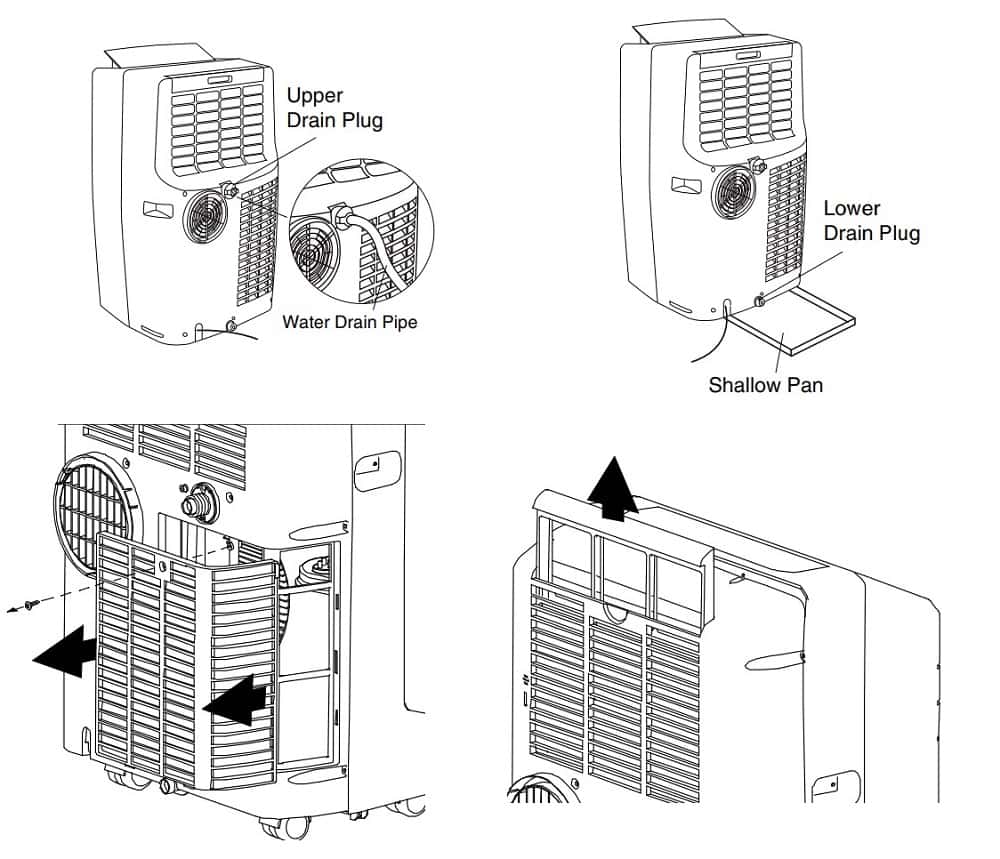
| 1 | Cleaning the AC Unit: Take apart the AC unit firstly. Air conditioners have two main parts; a condenser and evaporator. The dust generally build up on the aluminium fins. Clean the unit by washing and vacuuming. Also, vacuum the aliminum fins too. |
| 2 | Removing the filter, dust and other debris: As the air filters run, they gather dust and loose dirt. Remove the filter from its frame and shake the dusts. Rinse your filters to remove any dust or dirt. Sometimes, you might need to replace the filters. |
| 3 | Cleaning the cooling coils: For the proper cleaning, the cooling coils need a strong acidic solution. Spray the solution directly to the cooling coils. You can make a homemade acidic cleaning solution. It includes lemon juice, vinegar and water. |
| 4 | Cleaning the external housing units: The external housing unit of the portable air conditioner gathers dirt and dust over time. Simply use a damp cloth to clear the debris. It is not recommended to use an abrasive and strong chemical solution when you clean. A mild detergent will help you easily. |
Manual Pdf
Daikin AC Maintenance Manual PDF
York AC Maintenance Manual PDF
Whirlpool AC Service Manual PDF
Toshiba AC Split Type Service Manual PDF
- The Most Common AC Error Codes and Resolutions - November 1, 2024
- How to Uninstall an Air Conditioner Step by Step? - January 7, 2024
- All Air Conditioners Remote Control Symbols Meaning - January 2, 2024

